< Back ×
My Vehicle Change Vehicle
2001 GMC Savana 1500
< Back to View All
Transmissions Components & Shifters
- Department
- Brands
- Prices
OEM (Genuine) 2001 GMC Savana 1500 Transmission Cooler
PartNumber: 15059397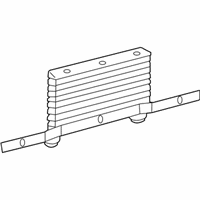 Product Specifications
Product Specifications- Notes: Auxiliary
- Other Names: Transmission Cooler
- Item Dimensions: 25.3 x 16.8 x 8.1 inches
- Item Weight: 1.20 Pounds
- Fitment Type: Direct Replacement
- Replaces: 15153151, 15970092
- Part Description: 2001 GMC Savana 1500 Transmission Cooler
Vehicle Fitment- 2001 GMC Savana 1500 | Base, SLE, SLT | 6 Cyl 4.3 L GAS, 8 Cyl 5.0 L GAS, 8 Cyl 5.7 L GAS
$170.04 MSRP:$256.48You Save: $86.44 (34%)

Four Seasons® Rapid Cool Automatic Transmission Oil Cooler for 2001 GMC Savana 1500
PartNumber: 53008Product Specifications- Notes: Premium Plate & Fin Cooler HD; w/o Bypass; Size - 11" x 11 5/8"
- Bracket: w/ Bracket
- Connector Fitting: 3/8
- Connector Gender: Male
- Connector Type: Hose Barb
- Contains Spring: No
- Core Row Quantity: 30
- Electric Fan: No
- Finish: Black
- Height IN: 11.625
- Height MM: 295.275
- Length: 11.000
- Length MM: 279.400
- Material: Aluminum
- Mounting Hardware Included: Included
- O.E. Replacement: No
- Outlet Diameter: 0.375
- Overall Depth IN: 0.750
- Overall Height IN: 11.625
- Overall Height MM: 342.9
- Overall Width IN: 11.250
- Overall Width MM: 285.75
- Performance Rated: Yes
- Printed Foot Note: Size - 11" x 11 5/8"
- Thickness: 0.750
- UPC: 096361530089
- Part Description: 2001 GMC Savana 1500 Rapid Cool Automatic Transmission Oil Cooler
Vehicle Fitment- 2001 GMC Savana 1500 | All Trims | 8 Cyl 5.0L
- 2001 GMC Savana 1500 | All Trims | 8 Cyl 5.7L
$60.14

Four Seasons® Rapid Cool Automatic Transmission Oil Cooler for 2001 GMC Savana 1500
PartNumber: 53007Product Specifications- Notes: Premium Plate & Fin Cooler HD; w/o Bypass; Size - 11" x 9 1/2";Premium Plate & Fin Cooler Medium Duty; w/o Bypass; Size - 11" x 9 1/2"
- Bracket: w/ Bracket
- Connector Fitting: 3/8
- Connector Gender: Male
- Connector Type: Hose Barb
- Contains Spring: No
- Core Row Quantity: 23
- Electric Fan: No
- Finish: Black
- Height IN: 9.500
- Height MM: 241.300
- Length: 11.000
- Length MM: 279.400
- Material: Aluminum
- Mounting Hardware Included: Included
- O.E. Replacement: No
- Outlet Diameter: 0.375
- Overall Depth IN: 0.750
- Overall Height IN: 9.500
- Overall Height MM: 342.9
- Overall Width IN: 11.000
- Overall Width MM: 285.75
- Performance Rated: Yes
- Printed Foot Note: Size - 11" x 9 1/2"
- Thickness: 0.750
- UPC: 096361530072
- Part Description: 2001 GMC Savana 1500 Rapid Cool Automatic Transmission Oil Cooler
Vehicle Fitment- 2001 GMC Savana 1500 | All Trims | 8 Cyl 5.0L
- 2001 GMC Savana 1500 | All Trims | 8 Cyl 5.7L
- 2001 GMC Savana 1500 | All Trims | 6 Cyl 4.3L
$52.65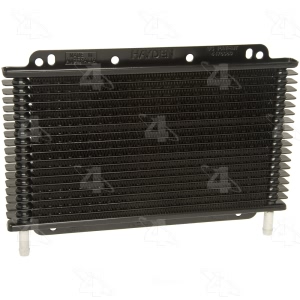

Four Seasons® Rapid Cool Automatic Transmission Oil Cooler for 2001 GMC Savana 1500
PartNumber: 53006Product Specifications- Notes: Premium Plate & Fin Cooler Light Duty; w/o Bypass; Size - 11" x 7 1/2";Premium Plate & Fin Cooler Medium Duty; w/o Bypass; Size - 11" x 7 1/2"
- Bracket: w/ Bracket
- Connector Fitting: 3/8
- Connector Gender: Male
- Connector Type: Hose Barb
- Contains Spring: No
- Core Row Quantity: 17
- Electric Fan: No
- Finish: Black
- Height IN: 7.500
- Height MM: 190.500
- Length: 11.000
- Length MM: 279.400
- Material: Aluminum
- Mounting Hardware Included: Included
- O.E. Replacement: No
- Outlet Diameter: 0.375
- Overall Depth IN: 0.750
- Overall Height IN: 7.500
- Overall Height MM: 342.9
- Overall Width IN: 11.000
- Overall Width MM: 285.75
- Performance Rated: Yes
- Printed Foot Note: Size - 11" x 7 1/2"
- Thickness: 0.750
- UPC: 096361530065
- Part Description: 2001 GMC Savana 1500 Rapid Cool Automatic Transmission Oil Cooler
Vehicle Fitment- 2001 GMC Savana 1500 | All Trims | 8 Cyl 5.0L
- 2001 GMC Savana 1500 | All Trims | 8 Cyl 5.7L
- 2001 GMC Savana 1500 | All Trims | 6 Cyl 4.3L
$47.69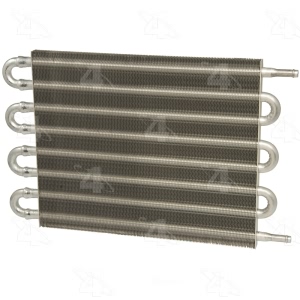

Four Seasons® Ultra Cool Automatic Transmission Oil Cooler for 2001 GMC Savana 1500
PartNumber: 53003Product Specifications- Notes: Economy Tube & Fin Cooler HD; Size - 10" x 15 7/8"
- Bracket: w/o Bracket
- Connector Fitting: 3/8
- Connector Gender: Male
- Connector Type: Hose Barb
- Contains Spring: No
- Core Row Quantity: 8
- Core Tube Width: 0.500
- Electric Fan: No
- Finish: Silver
- Height IN: 10.000
- Height MM: 254.000
- Length: 15.875
- Length MM: 403.225
- Material: Aluminum
- Mounting Hardware Included: Included
- O.E. Replacement: No
- Outlet Diameter: 0.375
- Overall Depth IN: 15.875
- Overall Height IN: 16.5625
- Overall Height MM: 420.6875
- Overall Width IN: 11.15625
- Overall Width MM: 283.6164
- Performance Rated: Yes
- Printed Foot Note: Size - 10" x 15 7/8"
- Thickness: 0.750
- UPC: 096361530034
- Part Description: 2001 GMC Savana 1500 Ultra Cool Automatic Transmission Oil Cooler
Vehicle Fitment- 2001 GMC Savana 1500 | All Trims | 8 Cyl 5.0L
- 2001 GMC Savana 1500 | All Trims | 8 Cyl 5.7L
$46.23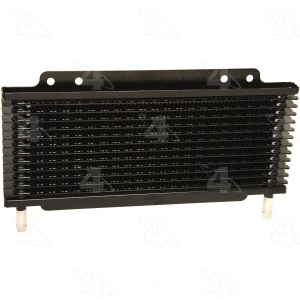

Four Seasons® Rapid Cool Automatic Transmission Oil Cooler for 2001 GMC Savana 1500
PartNumber: 53005Product Specifications- Notes: Premium Plate & Fin Cooler Light Duty; w/o Bypass; Size - 11" x 5 7/8"
- Bracket: w/ Bracket
- Connector Fitting: 3/8
- Connector Gender: Male
- Connector Type: Hose Barb
- Contains Spring: No
- Core Row Quantity: 12
- Electric Fan: No
- Finish: Black
- Height IN: 6.000
- Height MM: 152.400
- Length: 11.000
- Length MM: 279.400
- Material: Aluminum
- Mounting Hardware Included: Included
- O.E. Replacement: No
- Outlet Diameter: 0.375
- Overall Depth IN: 0.750
- Overall Height IN: 6.000
- Overall Height MM: 342.9
- Overall Width IN: 11.000
- Overall Width MM: 285.75
- Performance Rated: Yes
- Printed Foot Note: Size - 11" x 5 7/8"
- Thickness: 0.750
- UPC: 096361530058
- Part Description: 2001 GMC Savana 1500 Rapid Cool Automatic Transmission Oil Cooler
Vehicle Fitment- 2001 GMC Savana 1500 | All Trims | 6 Cyl 4.3L
$43.43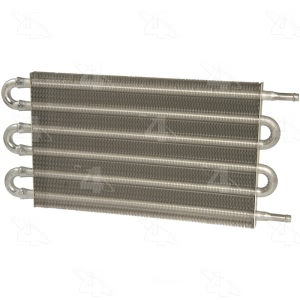

Four Seasons® Ultra Cool Automatic Transmission Oil Cooler for 2001 GMC Savana 1500
PartNumber: 53002Product Specifications- Notes: Economy Tube & Fin Cooler Medium Duty; Size - 7 1/2" x 15 7/8", Verification of minimum core space for fitment Reqd.
- Bracket: w/o Bracket
- Connector Fitting: 3/8
- Connector Gender: Male
- Connector Type: Hose Barb
- Contains Spring: No
- Core Row Quantity: 6
- Core Tube Width: 0.500
- Electric Fan: No
- Finish: Silver
- Height IN: 7.500
- Height MM: 190.500
- Length: 15.875
- Length MM: 403.225
- Material: Aluminum
- Mounting Hardware Included: Included
- O.E. Replacement: No
- Outlet Diameter: 0.375
- Overall Depth IN: 15.875
- Overall Height IN: 16.5625
- Overall Height MM: 420.6875
- Overall Width IN: 11.15625
- Overall Width MM: 283.6164
- Performance Rated: Yes
- Thickness: 0.750
- UPC: 096361530027
- Part Description: 2001 GMC Savana 1500 Ultra Cool Automatic Transmission Oil Cooler
Vehicle Fitment- 2001 GMC Savana 1500 | All Trims | 8 Cyl 5.0L
- 2001 GMC Savana 1500 | All Trims | 8 Cyl 5.7L
$40.22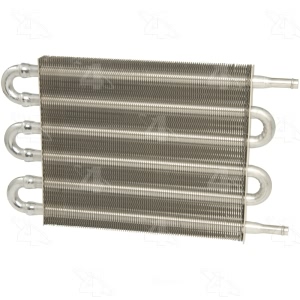

Four Seasons® Ultra Cool Automatic Transmission Oil Cooler for 2001 GMC Savana 1500
PartNumber: 53001Product Specifications- Notes: Economy Tube & Fin Cooler Light Duty; Size - 7 1/2" x 12 1/2";Economy Tube & Fin Cooler HD; Size - 7 1/2" x 12 1/2"
- Bracket: w/o Bracket
- Burst Psi Rating: 150 psi
- Connector Fitting: 3/8
- Connector Gender: Male
- Connector Type: Hose Barb
- Contains Spring: No
- Core Row Quantity: 6
- Core Tube Width: 0.500
- Electric Fan: No
- Finish: Silver
- Height IN: 7.500
- Height MM: 190.500
- Hose I.D. IN: 0.344
- Hose I.D. MM: 8.731
- Hose Length IN: 54
- Inlet Diameter: 0.375
- Length: 12.500
- Length MM: 317.500
- Material: Aluminum
- Mounting Hardware Included: Included
- O.E. Replacement: No
- Outlet Diameter: 0.375
- Overall Depth IN: 12.500
- Overall Height IN: 13.500
- Overall Height MM: 342.900
- Overall Width IN: 11.250
- Overall Width MM: 285.750
- Performance Rated: Yes
- Printed Foot Note: Size - 7 1/2" x 12 1/2"
- Style: Tube & Fin
- Thickness: 0.750
- UPC: 096361530010
- Part Description: 2001 GMC Savana 1500 Ultra Cool Automatic Transmission Oil Cooler
Vehicle Fitment- 2001 GMC Savana 1500 | All Trims | 8 Cyl 5.0L
- 2001 GMC Savana 1500 | All Trims | 8 Cyl 5.7L
- 2001 GMC Savana 1500 | All Trims | 6 Cyl 4.3L
$36.09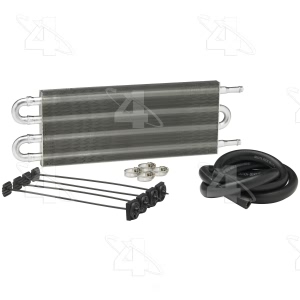

Four Seasons® Ultra Cool Automatic Transmission Oil Cooler for 2001 GMC Savana 1500
PartNumber: 53022Product Specifications- Notes: Economy Tube & Fin Cooler Medium Duty; Size - 5" x 15 7/8"
- Bracket: Not Included
- Connector Fitting: 3/8
- Connector Type: Hose Barb
- Contains Spring: Not Included
- Core Row Quantity: 4
- Electric Fan: Not Included
- Finish: Aluminum
- Height IN: 5.000
- Height MM: 127.000
- Length: 15.875
- Length MM: 403.225
- Material: Aluminum
- Mounting Hardware Included: Included
- O.E. Replacement: No
- Outlet Diameter: 0.375
- Overall Depth IN: 0.750
- Overall Height IN: 16.5625
- Overall Height MM: 420.6875
- Overall Width IN: 11.15625
- Overall Width MM: 283.6164
- Performance Rated: Yes
- Printed Foot Note: Size - 5" x 15 7/8"
- Thickness: 0.750
- UPC: 096361530225
- Part Description: 2001 GMC Savana 1500 Ultra Cool Automatic Transmission Oil Cooler
Vehicle Fitment- 2001 GMC Savana 1500 | All Trims | 6 Cyl 4.3L
$33.19

Four Seasons® Ultra Cool Automatic Transmission Oil Cooler for 2001 GMC Savana 1500
PartNumber: 53000Product Specifications- Notes: Economy Tube & Fin Cooler Light Duty; Size - 5" x 12 1/2"
- Bracket: w/o Bracket
- Burst Psi Rating: 150
- Connector Fitting: 3/8
- Connector Gender: Male
- Connector Type: Hose Barb
- Contains Spring: No
- Core Row Quantity: 4
- Core Tube Width: 0.500
- Electric Fan: No
- Finish: Silver
- Height IN: 5.000
- Height MM: 127.000
- Hose I.D. IN: 0.344
- Hose I.D. MM: 8.731
- Hose Length IN: 54
- Inlet Diameter: 0.375
- Length: 12.500
- Length MM: 317.500
- Material: Aluminum
- Mounting Hardware Included: Included
- O.E. Replacement: No
- Outlet Diameter: 0.375
- Overall Depth IN: 0.750
- Overall Height IN: 13.500
- Overall Height MM: 342.900
- Overall Width IN: 11.250
- Overall Width MM: 285.750
- Performance Rated: Yes
- Printed Foot Note: Size - 5" x 12 1/2"
- Thickness: 0.750
- UPC: 096361530003
- Part Description: 2001 GMC Savana 1500 Ultra Cool Automatic Transmission Oil Cooler
Vehicle Fitment- 2001 GMC Savana 1500 | All Trims | 6 Cyl 4.3L
$29.91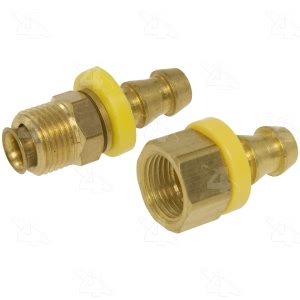

Four Seasons® Transmission Oil Cooler Installation Kit for 2001 GMC Savana 1500
PartNumber: 53009Product Specifications- Notes: Transmission Line Fitting Kit
- Bracket: w/o Bracket
- Connector Shape: Round
- Contains Spring: No
- Electric Fan: No
- Finish: Gold
- Gasket / Seals: Not Included
- Inlet Gender: Male
- Material: Steel
- O.D. IN: 0.750
- O.E. Replacement: No
- Outlet Gender: Male
- Overall Height IN: 5.750
- Overall Height MM: 146.05
- Overall Width IN: 3.875
- Overall Width MM: 98.3996
- Performance Rated: Yes
- Style: Fitting Kit
- Thickness: 0.625
- UPC: 096361530096
- Weight LBS: 0.110
- Part Description: 2001 GMC Savana 1500 Transmission Oil Cooler Installation Kit
Vehicle Fitment- 2001 GMC Savana 1500 | All Trims | All Engines
$10.03
FAQ for Automatic Transmission Oil Cooler Repair
Q: Why can't I reuse the transmission fluid I use for flushing?
A:
The very fine metal and clutch material debris from the transmission failure in the ATF cause failures with the hall effect speed sensors that are used to measure the flow rate. To avoid costly repairs, expensive filters, regular maintenance, and problems caused by a partially restricted filter, the filter was not included.
By Bob
GM Specialist
01/11/2022Q: What is the recommended torque for the four bolts securing the oil cooler to the radiator support?
A:
The recommended torque is 10 Nm (89-inch lbs.).
By Bob
GM Specialist
01/11/2022Q: How to install the transmission fluid auxiliary cooler?
A:
You need to install the four bolts securing the oil cooler to the radiator support and the two nuts securing the two oil cooler lines to the auxiliary oil cooler and reinstall the grille assembly.
By Bob
GM Specialist
01/11/2022Q: Why doesn't GM publish a specification for auxiliary transmission oil coolers?
A:
The auxiliary oil cooler used with GM vehicles does not contain an internal Turbulator plate like the radiator tank oil cooler does. Therefore, there is no internal restriction that would affect the flow rate through the oil cooling system so a specification for an auxiliary oil cooler is not required. Keep in mind, kinks, and damage to the auxiliary cooler and lines can affect the flow rate through the system.
By Bob
GM Specialist
01/11/2022Q: What is the removal procedure for the transmission fluid auxiliary cooler?
A:
You need to remove the grille assembly, the two nuts securing the two cooler lines to the oil cooler, the four bolts securing the auxiliary oil cooler to the radiator support, and the auxiliary oil cooler.
By Bob
GM Specialist
01/11/2022Q: What is the difference between steel and aluminum oil coolers?
A:
The aluminum oil cooler tube is slightly thinner in construction than the steel oil cooler tube, which affects the oil flow rate. The fitting that is protruding out of the radiator tank easily identifies the aluminum oil cooler. Refer to the Quick Reference card provided with the J 45096 to identify the proper flow rate for the aluminum oil cooler.
By Bob
GM Specialist
01/11/2022See more FAQs (1)


